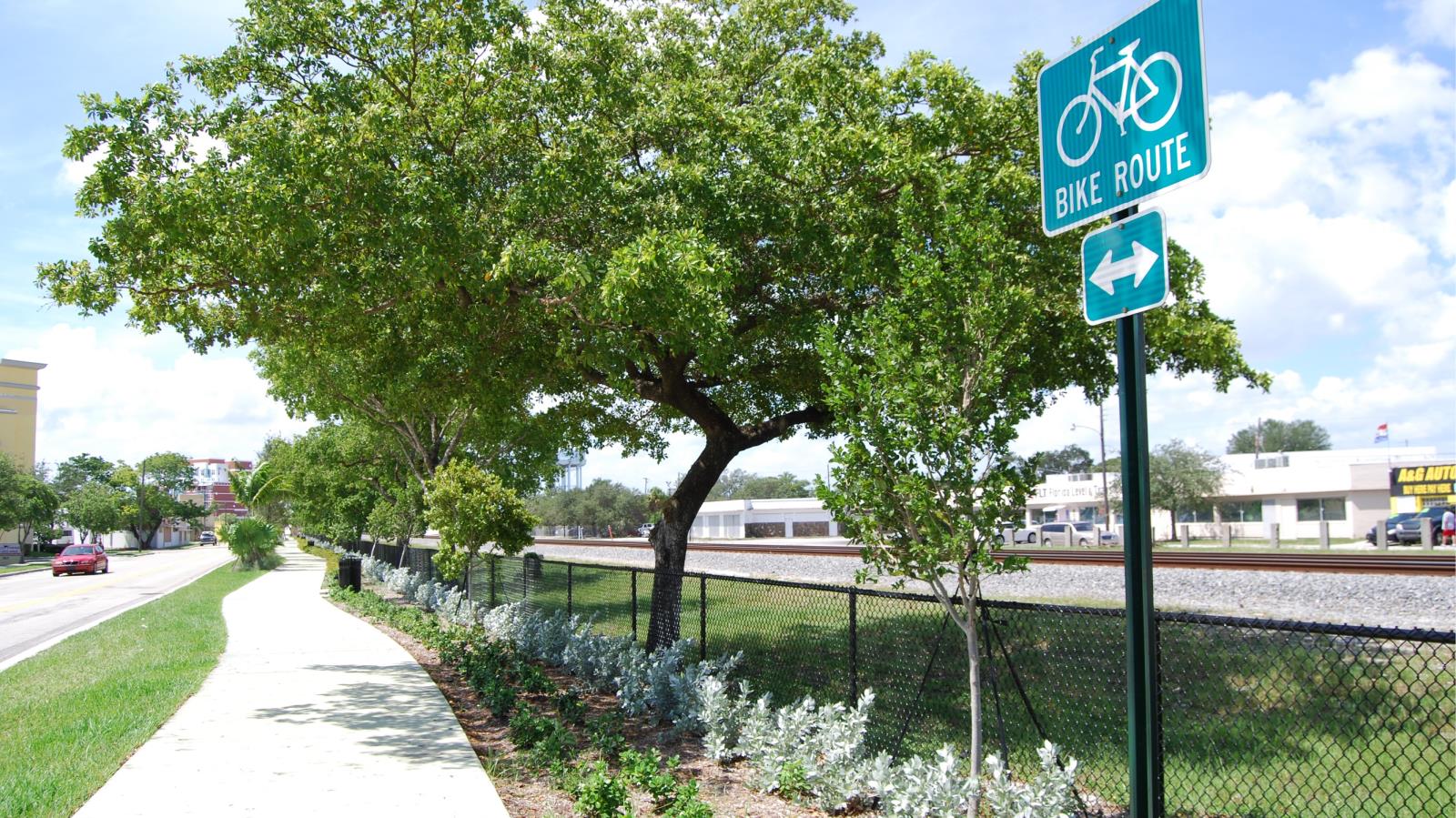Cycling Infrastructure
Lanes, Racks and More
When it comes to cycling infrastructure there are several essential components. People need to have safe routes to ride, convenient places to store their bicycles securely, and facilities for cleaning up. We are working to provide the following so that cycling is a truly convenient mode of transportation.
 What we're rolling out.
What we're rolling out.
Safe Network of Connected Cycling Paths. We are working regionally to connect our City to a planned network of greenways and cycling paths in our county and beyond. These provide pleasant, uninterrupted cycling routes with useful amenities along the way.
Clearly Marked Lanes. Our Transportation and Public Works departments come together to create properly sized and visible lanes on streets. On more heavily trafficked streets, we provide lanes on both sides of the road.
Bicycle Racks. We increase our inventory of racks each year. In 2014, we installed over 70 new racks. We look for locations that already have high volumes of cyclists, taking bikes tethered to trees and street poles as a sure sign of need.
Bicycle Valet. In 2014, we successfully piloted a program to offer specialized bicycle parking at large events. Bicycle valet allows cyclists preferential access to gatherings where streets are closed to cars or that can benefit from reduced traffic.
Adding your own cycling facilities.
If you own or manage a building in our area, consider adding a bicycle rack next to your entryways. The guidelines are based on a combination of peak occupancy rates and square footage and vary by type of building. Generally, for residential buildings, you should provide racks for 30% or occupants. For commercial buildings, the percentage is 10% of occupancy, but you need to add racks for visitors based on the size of the buildings. In addition, if your building is an office building or other commercial site, you can encourage cycling to work by offering changing and showering facilities, as well as an emergency repair kit including an air pump, tire patches, and other necessities.
You can take it a step further by considering whether bike sharing is right for your building. Do your employees or tenants tend to travel short distances frequently? If so, having a small fleet of bicycles to share can be a huge benefit. It may even help to improve employee health and lower your health insurance costs. Even better, source those bicycles from donations and get points for reducing waste too!
For more information about sizing your storage and other cycling facilities appropriately, visit the USGBC Bicycle Network LEED credit overview.


